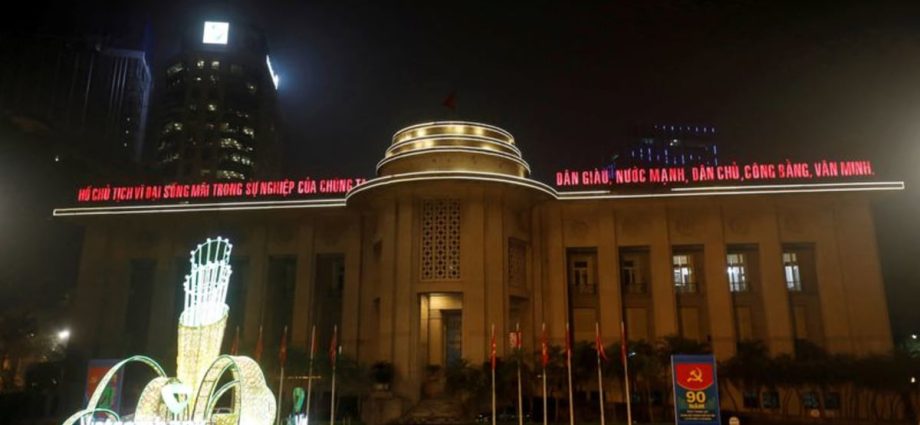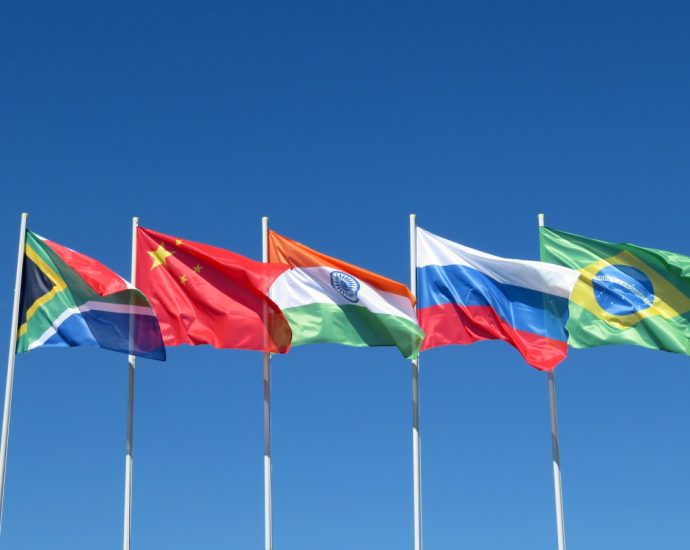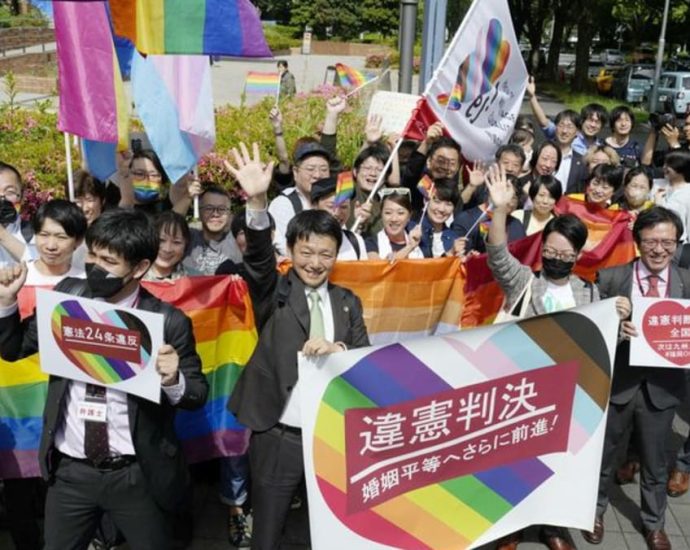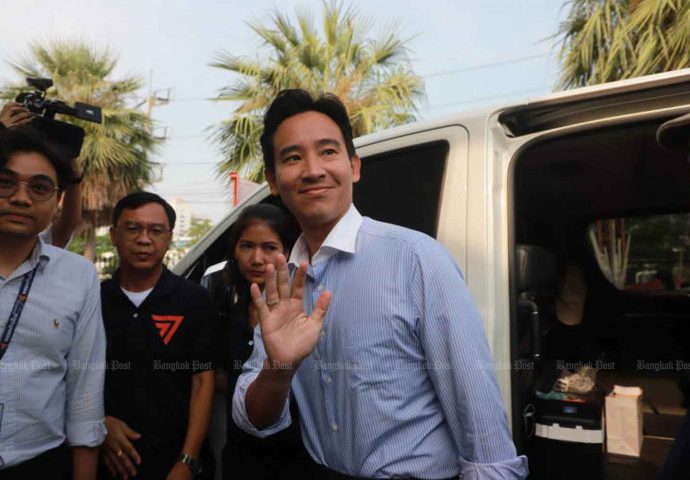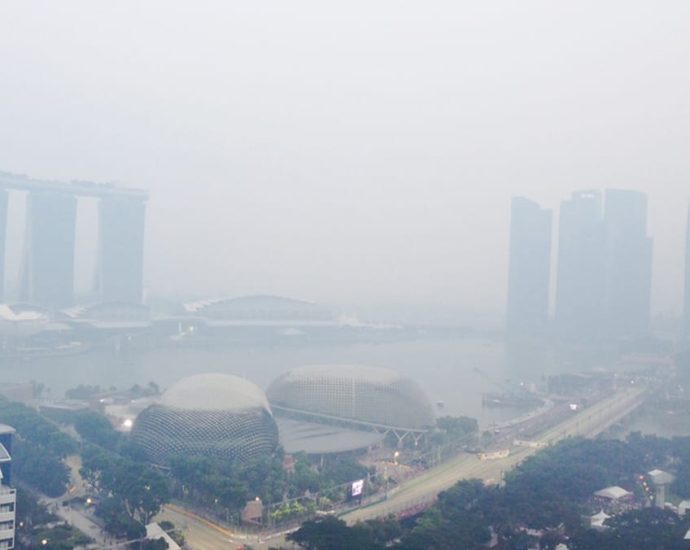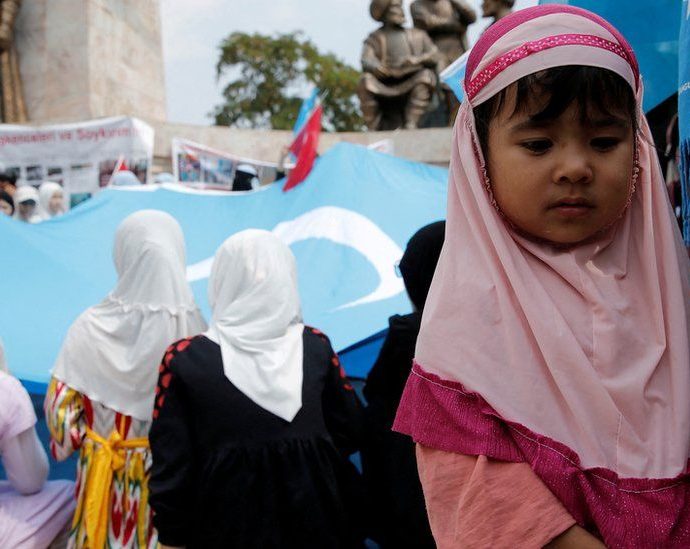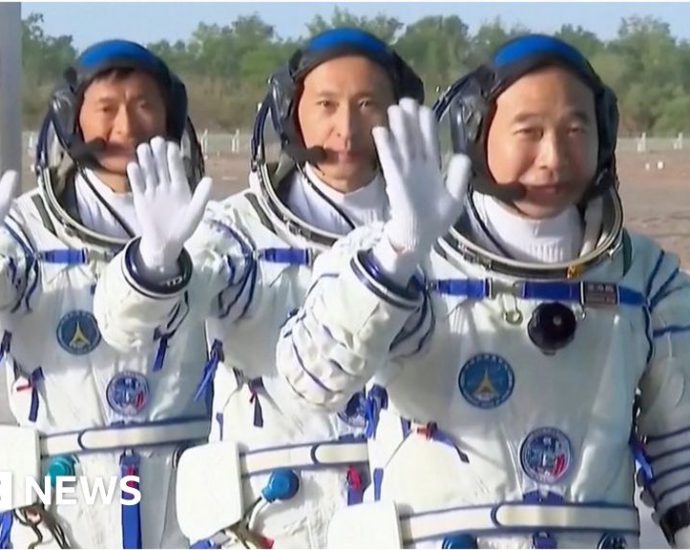Vietnam urges industry to save energy during heatwave
HANOI: Vietnam is turning off street lights and manufacturers are switching operations to off-peak hours to keep the national power system running amid record temperatures in some areas that have caused a surge in demand. As weather officials warn the heatwave could run into June, several cities have cut backContinue Reading
Vietnam’s capital Hanoi dims street lights to save energy during heat wave
HANOI: Authorities in Vietnam’s capital of Hanoi are turning off street lights to keep the national power system running amid record temperatures bringing a surge in demand in some parts of the Southeast Asian nation. As weather officials warn the heat wave could run into June, several cities have cutContinue Reading
Deflation risk stalking Chinaâs economic recovery
China’s central bank is pushing back with growing regularity on market worries that Asia’s biggest economy may be sliding toward deflation.
In April, China’s consumer price index rose just 0.1% year on year, putting the economy on the edge of negative territory but not yet deep into the problem.
Indeed, China may currently be experiencing “disinflation” rather than a long-term trend toward deflation. Yet if Japan taught policymakers around the globe anything it’s that deflation concerns can quickly take on a life of their own.
That’s a problem that China must not take lightly, economists say. And it’s high time People’s Bank of China Governor Yi Gang shut down – and firmly – a narrative that Beijing hardly needs as market worries mount about the health of China’s post-Covid economic recovery.
Strategist Vincent Chan at Aletheia Capital speaks for many when he warns that China is at the “borderline of deflation.”
That same goes for analyst Kelvin Wong at OANDA. “To address this ongoing growth slowdown in China that may lead to a deflationary spiral, which in turn can potentially trigger an adverse impact on countries that export goods and services to China such as Singapore, the Chinese central bank needs to switch away from its current conservative stance to loosen its liquidity tap further to stimulate growth,” Wong argues.
Long-time Japan observers may detect some troubling echoes as Fu Linghui, spokesperson for China’s National Bureau of Statistics, insists that there’s “no deflation” in the economy. And if there is, it’s “transitory.”
This last word might trigger PTSD from similar assurances emanating from Tokyo in the late 1990s. Or their mirror image — “don’t worry, inflation is transitory” — coming from Washington these last two years.
As Nikkei Asia points out in an investigative report this week, consumer prices in mainland provinces Jilin, Shanxi, Guizhou, Liaoning, Anhui, Henan and Shanghai turned negative in April. Data from Chinese research company Wind Show corroborate Nikkei’s findings.
The question, of course, is what to do. A key Xi priority has been to reduce leverage and debt — from local government balance sheets to property developers.
Yet if the focus is on debt reduction while nothing is done to fix the housing sector, then that could be a recipe for deflation.
For now, says economist Raymond Yeung at ANZ Research, the “core view is that China’s economy is deflationary.”
Others argue it’s too early to know where China’s price trends will be six months from now.

“While claims that China has entered a deflationary period are excessive, the data indicate that China’s economy continues to be hamstrung by low effective demand,” says economist Yu Yongding, who served on the PBOC’s Monetary Policy Committee from 2004 to 2006. “Official figures also support the claim that China’s GDP growth has been below potential for some time.”
Yu notes that Xi’s government seems reluctant to shoot for a higher growth target than this year’s 5%, in part out of fear that it might exacerbate China’s debt imbalances. At the same time, though, Yu says there’s a risk of a “self-fulfilling prophecy, by weakening confidence and failing to exploit growth potential fully.”
Some of Beijing’s policy options, including cash transfers, might give household consumption an immediate lift.
But “as China’s government well knows,” Yu notes, “consumption is a function of income, a sustained, broad-based increase in incomes depends on economic growth, and infrastructure investment is traditionally the state’s most effective instrument for boosting growth when effective demand is weak. Despite past investments, China still has a large infrastructure gap that urgently needs to be closed.”
Rescuing the property sector might pay the highest dividends. Since January, Xi’s government unleashed a barrage of measures to reduce restrictions on borrowing by developers, curb risks of “capital chain breaks” in the sector as property purchase contracts fall through suddenly, extend lower mortgage rates to incentivize demand for homes and limit commissions for real estate agents.
Economists point out that easing the so-called “three red lines” policy is becoming more urgent. It establishes caps on key metrics debt-to-cash, debt-to-assets and debt-to-equity ratios. Many see this policy as the trigger for many of the biggest real estate stumbles in recent years.
Since the directive already demands that developers disclose details on their debts, it seems feasible to allow property companies to leverage up a bit and delay deadlines for debt targets without fanning new bubbles.
Other solutions include extending lower mortgage rates to first-home buyers in environments where prices of new properties are slumping. There’s also scope for once again allowing private equity funds to play a bigger role in raising capital for residential property projects.
Whatever the strategy, more attention must go toward restoring investor confidence, as strategist Winnie Wu at Bank of America Corp sees it. Since the property sector is “a key concern” for global investors, she says, revitalizing it seems crucial to restoring confidence in Chinese asset markets.
That confidence seems in short supply this month. Chinese stocks are on the precipice of bear market territory amid worries about a slowing economy, geopolitical and trade tensions and deflation fears.
Mainland shares traded in Hong Kong – as measured by the Hang Seng China Enterprises Index – are near the 20% loss threshold for the year.
The drop in profits among Chinese industrial firms, which had a rough first four months of 2023, is weighing on the broader indices. This downshift told skittish investors all they need to know about China’s slowing demand and deepening factory-gate deflation.
Data due out Wednesday – especially China’s Purchasing Managers Index for the manufacturing sector – are widely expected to signal further contraction in April.

Analyst Karl Shen at Fitch Ratings notes that China’s secondary-home market “has been cooling since April, with a fall in the number of listed-for-sale homes, lower asking prices and fewer transactions.”
This slowdown, Shen says, follows a “strong rebound” in the first quarter, “suggesting homebuyer confidence remains fragile amid an uncertain economic outlook and weak employment prospect.”
Shen says the drop in average asking prices is likely driven by homebuyers’ hesitation to make purchases and home-upgraders’ selling of their existing homes at lower prices to facilitate faster transactions.
The number of homes listed for sale has also decreased, indicating that many homeowners are delaying the sale amid pricing pressure, and may continue to weigh on transaction volume.
Even so, economist Wei He at Gavekal Research can’t help but wonder if the negativity is overdone.
“Markets have executed a complete volte-face on China’s growth prospects, from exuberance on an expected world-shaking boom to pricing in deep pessimism — is this reversal justified?” he asks.
“For commodity prices, the answer is probably yes. Even a strong cyclical rebound led by spending on consumer services was never going to be as good for commodities as the investment-driven cycles of the past. And the bounce in construction once expected by commodity producers has clearly not materialized, with property developers scarred by the past and uncertain about the future.”
Yet, He adds, “for Chinese government bonds and the renminbi, the recession trade has probably overshot. Recent market prices imply a growth outlook for 2023 as bad as that during the depths of 2022’s lockdowns — a fairly unlikely outcome. Despite all the bad headlines, the labor market is still recovering and companies are planning to expand. This could be a good moment to sell Chinese bonds and buy the renminbi.”
It’s also a good moment, though, for Xi’s new premier, Li Qiang, to buttress his reformist bona fides. Since rising to the No 2 job, Li has managed to lower the temperature surrounding Beijing’s crackdown on Big Tech. Now, it’s time to recalibrate economic dynamics in China – starting with a property market in dire need of restructuring.
The lessons from Japan are to act early and boldly to stop deflationary forces in their tracks. By the time they become ingrained, it might already be too late.
Follow William Pesek on Twitter at @WilliamPesek
Robot chefs and waiters: 40% of food services jobs at risk of becoming obsolete in 3 years

Additionally, self-ordering kiosks have popped up across fast food chains and bubble tea outlets in recent years.
With the influx of these machines, the future of eateries could see minimal kitchen and floor staff. Current employees will have to be reskilled in areas like customer satisfaction and service improvement.
Industry players said the jobs transformation is already taking place, and both employers and employees in the food and beverage (F&B) sector must embrace the changes or be left behind.
“The most challenging part is the mindset. There must be a willingness to adapt,” said Mr Andrew Kwan, president of the Restaurant Association of Singapore.
“There must be an agility of the mind to say, ‘let’s recognise the trends and make adjustments accordingly’.”
JOBS TRANSFORMATION MAP
To help the sector, a Jobs Transformation Map was launched last week, laying out plans for workers to upskill themselves and take on new roles, such as sustainability specialists or restaurant designers.
“For the workers, it is more critical now than ever to adapt to the speed of changes, and to keep on improving their skills and knowledge,” said Minister of State for Trade and Industry Low Yen Ling.
“Workers who take charge of their own career and professional development by constantly acquiring new skills are the ones who will stay relevant and highly employable.”
Firms looking to redesign jobs can get up to 70 per cent funding support.
An up to 90 per cent wage subsidy scheme is also in place for employers who are reskilling existing workers for new roles.
Ms Low said there is growing consumer demand for convenience, personalised and experiential services, and sustainable practices.
Another key trend shift she highlighted is a greater adoption of technology for digital solutions and automation equipment since the COVID-19 pandemic.
An ageing local workforce and changing career aspirations of Singapore’s youth have also led to more competition for workers.
These challenges mean that companies need to redesign jobs, embrace technology, and optimise their manpower model to stay competitive, Ms Low said.
Last year, the food services industry employed about 235,000 workers and contributed some S$4.5 billion to Singapore’s economy.
BRICS expanding opportunities to influence global governanceÂ

This week, the five foreign ministers of BRICS (Brazil, Russia, India, China and South Africa) will meet in Cape Town. On the second day of their meet they will be joined by 15 other foreign ministers representing Africa, the Global South, and “Friends of BRICS” nations. Among other things these deliberations will seek to firm up the agenda for the BRICS Summit to be held during August 22-24 this year.
What are the core issues that are expected to engage their interactions, and what makes BRICS an increasingly decisive forum for global governance?
BRICS 2.0
In its second decade, BRICS has emerged as the world’s most powerful grouping, with expanding recognition for being the locomotive of global growth. But BRICS’ economic rise also marks an important geopolitical drift, as this grouping has come to be seen as an alternative to the US-led “liberal world order.”
For instance, BRICS’ collective gross domestic product has surpassed the US-led Group of Seven advanced industrialized nations. In purchasing power parity terms, while the collective GDP of the G7 shrank from 50.42% of world GDP in 1982 to 30.39% in 2022, BRICS’ GDP for the same period enhanced its share from 10.66% to 31.59%.
As well, while the Covid-19 pandemic set in deceleration of the G7 economies, BRICS economies – especially those of China and India – continued to show strong potential.
Also, the Ukraine war has set the stage for BRICS becoming increasingly conspicuous, as the grouping is seen as the most reliable partner for Russia. Besides Russia itself, not one of the other four BRICS nations has supported any of the Western resolutions to condemn Moscow’s military operations. They have also not collaborated with Western economic sanctions that seek to impose obligations on other nations.
Indeed, BRICS has emerged as the singular support base keeping the Russian economy afloat. Also, while the United States has been busy raising a coalition of 50 or so nations to supply Ukraine for its war efforts, South Africa, the current chair, has prioritized BRICS playing a greater role in ending the conflict between Ukraine and Russia.
Individually as well, China and India have been exploring ways to facilitate an early end of the Ukraine war.
This clearly reflects the new bold BRICS. In face of the International Criminal Court having issued arrest warrants for President Vladimir Putin for his so-called war crimes in Ukraine, South Africa has announced diplomatic immunity to all officials from Russia. This confidence and enthusiasm both within BRICS and about BRICS makes their parleys both interesting and intriguing, with implications way beyond these five nations.
BRICS expansion
For instance, about two dozen nations have expressed interest in joining the BRICS grouping. About 20 have formally applied for membership, which of course has remained frozen since South Africa joined the original BRIC grouping in 2011.
These applicants include nations from across the world: Algeria, Argentina, Baharain, Bangladesh, Belarus, Egypt, Indonesia, Iran, Nigeria, Saudi Arabia, Senegal, Sudan, Thailand, Tunisia, Uruguay, Venezuela, Zimbabwe and so on.
Within BRICS as well, the member nations’ reluctance to open up has witnessed change. China has typically been the most vocal supporter of expansion, while India was seen as the most reluctant. Over the years, Russia, Brazil and South Africa – in that order – have also shown greater inclination to add new members, though each of them has its own preferences.
The Ukraine war has seen Russia becoming increasingly supportive of BRICS expansion. This is driven by its need to expand its support base against Western censure and sanctions.
New Delhi remains concerned about Beijing trying to pack more of its friends into the forum, which could result in India getting marginalized. But with India now the world’s fifth-largest economy, New Delhi may have its own reasons to support friendly nations like Argentina, Indonesia, Saudi Arabia, and the United Arab Emirates.
While BRICS members will need to build consensus on detailed criteria and other modalities for new members’ inclusion, this growing global interest surely enhances BRICS’ credibility and influence on global governance.
Expanding intra-BRICS trade has been the primary tool for strengthening the forum. This has lately seen increasing focus on exploring alternatives to reduce their dependence on the US dollar, and creation of a BRICS currency is expected to be on top of their agenda this week.
The freezing of Russian assets by the West has seen this becoming a priority, where some of the BRICS members have already put in place mechanisms for using local currencies. China has been working on globalizing its yuan. New Delhi has also evolved arrangements to trade in Indian rupees with 18 nations.
India’s agenda
India, which is going to host two back-to-back summits – of the Shanghai Cooperation Organization on July 3-4 followed by the Group of Twenty meet on September 9-10 – has sought to use such multilateral meetings to evolve a consensus on its own agenda. But in addition to these preoccupations, the BRICS foreign ministers’ meet this week will see Indian Foreign Minister Subrahmanyam Jaishankar’s bilateral meetings with China and Russia drawing special scrutiny and interest.
The Hiroshima G7 summit two weeks ago saw Indian Prime Minister Narendra Modi having his first in-person bilateral meeting since the beginning of Ukraine war with President Volodomyr Zelensky.
During the war these two leaders had spoken four times by phone, and before that they had only met briefly at the Glasgow climate-change summit in 2021. But now, after this month’s meeting, Modi’s call to “raise your voice against unilateral attempts to change the status quo,” even if spoken in the context of border tensions between India and China, will require some explaining with India’s time-tested friend Russia.
This will also be seen against the backdrop of Modi’s meeting with Vladimir Putin during the Samarkand SCO Summit last September where the Indian PM had told the Russian president that “today’s era is not an era of war,” words that were repeated ad nauseam in Ukrainian narratives with Western media seeking to paint them as India’s warning to Moscow.
Likewise, with India preparing to host President Xi Jinping at the SCO and G20 summits, this has created strong expectations of the two sides finding a breakthrough in their border tensions.
These will soon enter their fourth year, with both sides maintaining heavy forward deployments while 18 rounds of senior-level talks and more than a dozen inter-ministerial meetings, plus meetings between their foreign and defense ministers, have not been of much avail so far.
At Cape Town this week, the foreign ministers of India and China will have their third bilateral in three months. India has maintained that bilateral relations cannot be normal until the standoff on the border is resolved.
Conclusion
All these bilateral equations of BRICS members are bound to impact their efforts at building a multilateral consensus on a range of issues, from expanding membership to initiatives for addressing global challenges. Many of these are also issues that get reverberated in other forums and will have a direct impact on the parlays of coming SCO, BRICS and G20 summits.
BRICS is seen today as the most formidable voice for the Global South on the high table of major powers of the post-World War II US-led world order. With the Ukraine war widening that bipolarity, BRICS will have to tread with care.
Second, Brazil’s Luiz Inacio Lula da Silva becoming the next chairman of BRICS in August will also sharpen its credentials as an alternative to US-led global governance.
For BRICS to overcome its internal disjunctions and harness its historic opportunities will require not just strong mutual understanding and trust but everyday diplomatic finesse and foresight for bold initiatives. And this will remain a work in progress, as an expanded BRICS will only makes consensus that much harder to achieve.
Follow Swaran Singh on Twitter @SwaranSinghJNU.
Japan court rules that a bar on same-sex marriage is unconstitutional
Nevertheless, more than 300 Japanese municipalities covering about 65 per cent of the population allow same-sex couples to enter partnership agreements. But the right is limited in scope. Partners cannot inherit each other’s assets or have parental rights to each other’s children. Hospital visits are not guaranteed. Mizushima said theContinue Reading
Lawyer petitions to gag Move Forward on lese majeste law
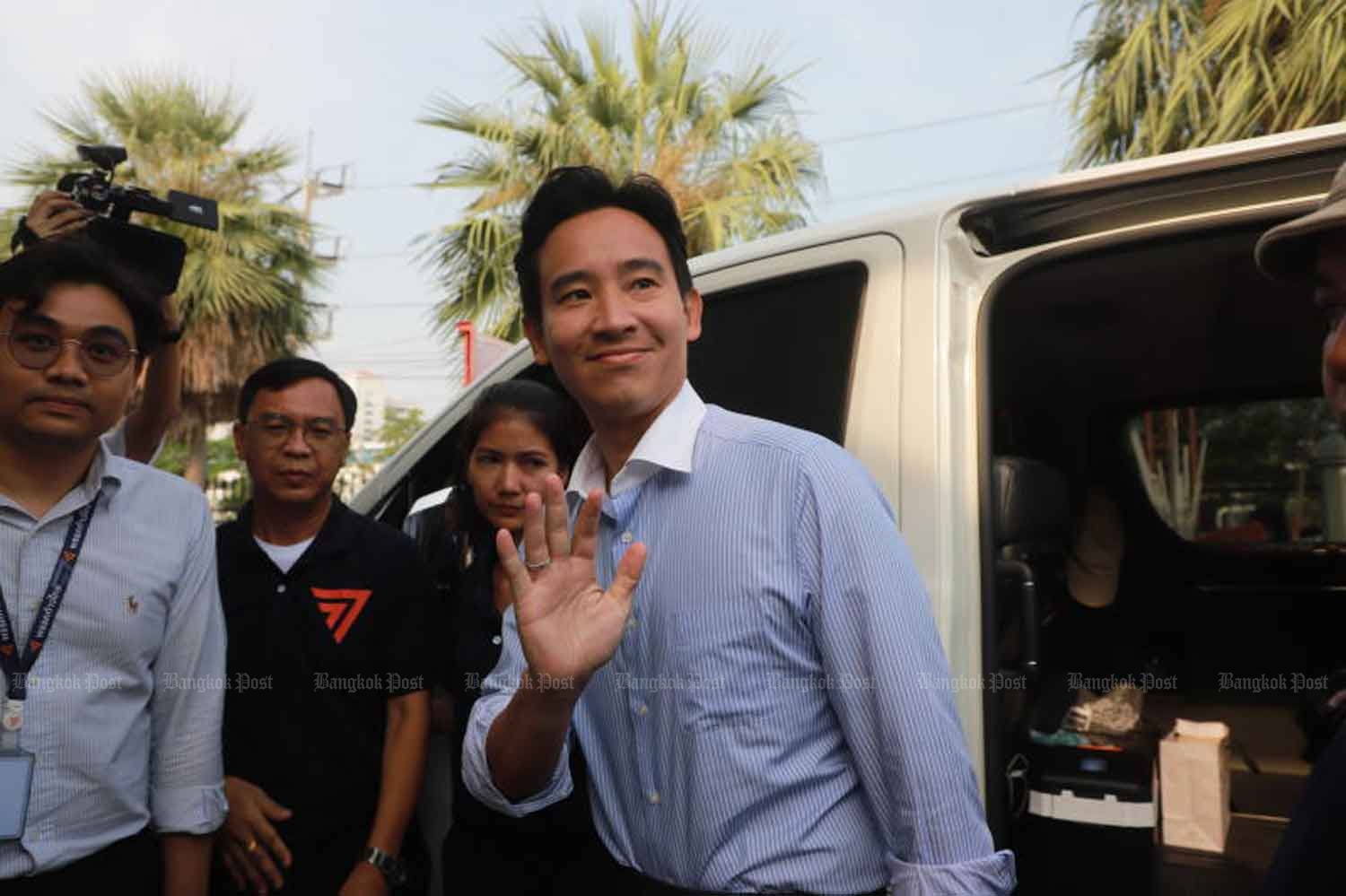
A lawyer has asked the Office of the Attorney General to forward a petition to the Constitutional Court requesting that it order Move Forward leader and aspirant prime minister Pita Limjaroenrat and his party to cease their campaign to change the lese majeste law.
Teerayut Suwankesorn filed his ptition request with the OAG on Tuesday, saying he was acting as an individual and a citizen.
Mr Teerayut said he wanted the Constitutional Court to order Mr Pita and the Move Forward Party to cease all attempts to amend or abolish Section 112 of the Criminal Code, the lese majeste law.
He also wanted the court to order them to stop expressing opinions in speeches, articles, publications and advertisements which could lead to Section 112 being amended or abolished.
Mr Teerayut said he expected the OAG would forward his petition to the Constitutional Court in 15 days. If not, he would exercise his right under the constitution and submit the petition directly to the court for consideration.
He had earlier submitted a petition asking the Election Commission to examine whether Move Forward and its members, in declaring its policy to amend Section 112 during its campaign, had violated the constitution. The EC has not responded to the request.
Singapore coordinating action plans amid higher haze risk
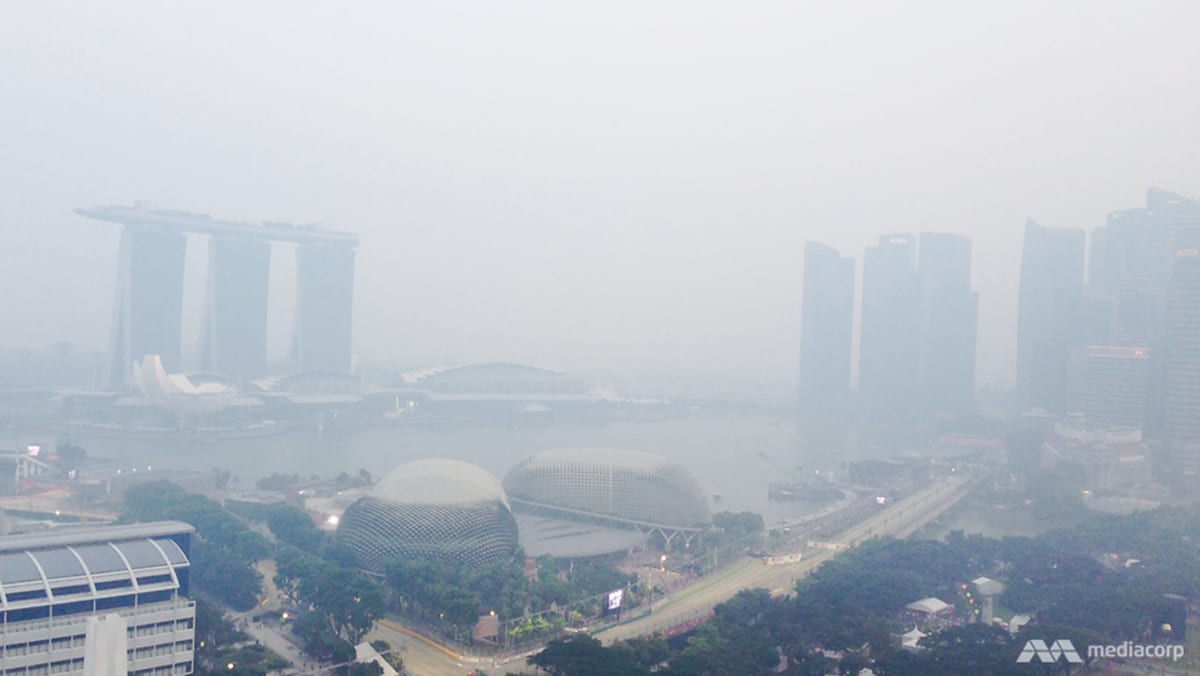
WARMER TEMPERATURES
During the last strong El Nino event from 2015 to 2016, Singapore’s total rainfall from June to September 2015 was about 35 per cent below the long-term average, said the Met Service.
El Nino events also bring warmer temperatures to Singapore, with the warmest temperatures often occurring when El Nino events weaken typically in March to April the year following the start of the event.
Singapore’s average temperature over the June to September 2015 period was 28.8 degrees Celsius or 0.6 degree Celsius above its long-term average for that period.
For the period from March to April 2016, Singapore’s average temperature was 29.2 degrees Celsius or 1.2 degrees Celsius above its long-term average for that period, said the authority, adding that 2016, together with 2019, are Singapore’s hottest years on record.
“At this stage, there is no indication of the strength and duration of the El Nino, if it develops. Should a strong El Nino set in, well below average rainfall and warmer temperatures can be expected during the coming southwest monsoon season.”
The Met Service said it will continue to closely monitor the development of El Nino and IOD as well as the regional weather and haze situation, and provide updates when necessary. Haze and El Nino updates are available on its website.
Yunnan protest: Mosque closure sees clashes with security forces
 SUPPLIED
SUPPLIEDProtesters have clashed with large numbers of police over the planned demolition of a mosque’s dome in a largely-Muslim town in Yunnan, China.
Social media videos showed crowds outside the 13th-century Najiaying Mosque in Nagu town on Saturday.
At points, scuffles break out between police and locals, who were hemmed in by hundreds of armed officers.
Yunnan, an ethnically-diverse province in southern China, has a significant Muslim population.
China is officially atheist and the government says it allows religious freedom. But observers say there has been an increased crackdown on organised religion in recent years – with Beijing seeking greater control.
In Nagu, the Najiaying Mosque had been a key landmark and in recent years had expanded with a new domed roof, as well as a number of minarets.
However, a 2020 court judgement ruled the additions illegal, ordering them to be removed. Recent actions to carry out that order appear to have sparked the demonstrations.
Videos of Saturday’s protests, verified by the BBC, showed lines of police blocking entry to the mosque, and group of men attempting to force their way in with some throwing rocks at police.
Other clips show the police later withdrawing, as the crowd enters Najiaying Mosque.
Police in Tonghai County, where Nagu is located, issued a statement on Sunday calling for protesters to surrender to police by 6 June.
“Those who voluntarily turn themselves in and truthfully confess the facts of violations and crimes may be given a lighter or mitigated punishment,” said the notice.
Calling the incident “a serious obstruction of social management order”, authorities also urged others to “actively report” protesters.
Protests in China remain relatively uncommon, but more have taken place since the pandemic where severe lockdowns and movement restrictions triggered displays of public anger.
The Hui are one of 56 ethnic groups recognised by Beijing and are predominantly Sunni Muslims. Yunnan, in the country’s south-west, is home to some 700,000 of about 10 million Hui Muslims in China.
They are often referred to as Chinese Muslims by local media, and are seen as well-integrated into Chinese society after centuries of intermarriage and assimilation.
Observers say Beijing has sought to have more control over religious groups in recent years – and how they operate in society.
In 2021, President Xi pledged to continue a “Sinicisation of religion” – the transformation of religious beliefs to reflect Chinese culture and society.
In 2018, hundreds of Hui Muslims in the Ningxia region engaged in a protracted standoff with authorities to prevent their mosque being demolished. Authorities later relented but insisted that its Arabesque features must be altered.
That same year, three mosques in Yunnan were also shut down for what was deemed to be “illegal religious education”.
China has also been accused of systematic human rights abuses against Uyghur Muslims in its north-western province of Xinjiang, where mosques have been demolished and Islamic religious practices banned. Beijing denies the accusations of abuse.
-
-
18 December 2018
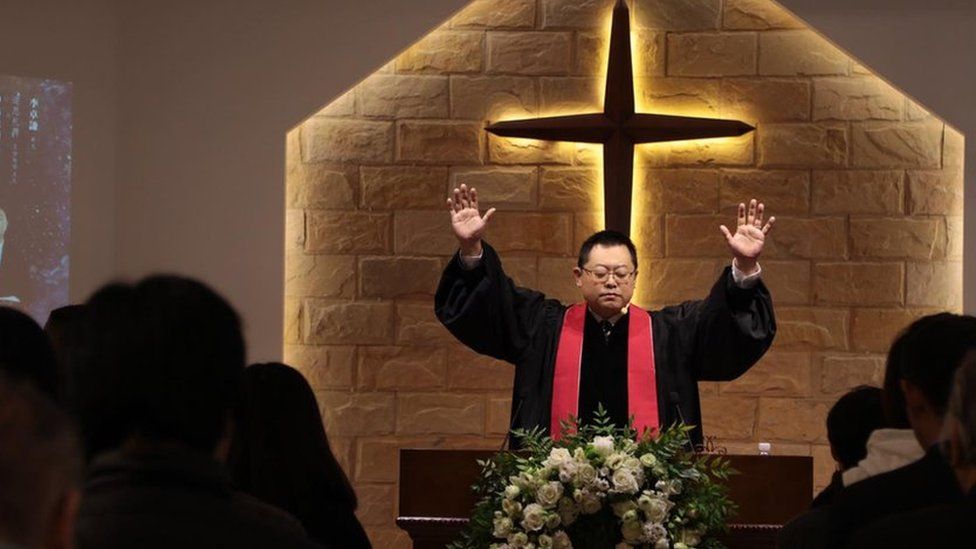
-
-
-
1 September 2022

-
-
-
2 September 2022
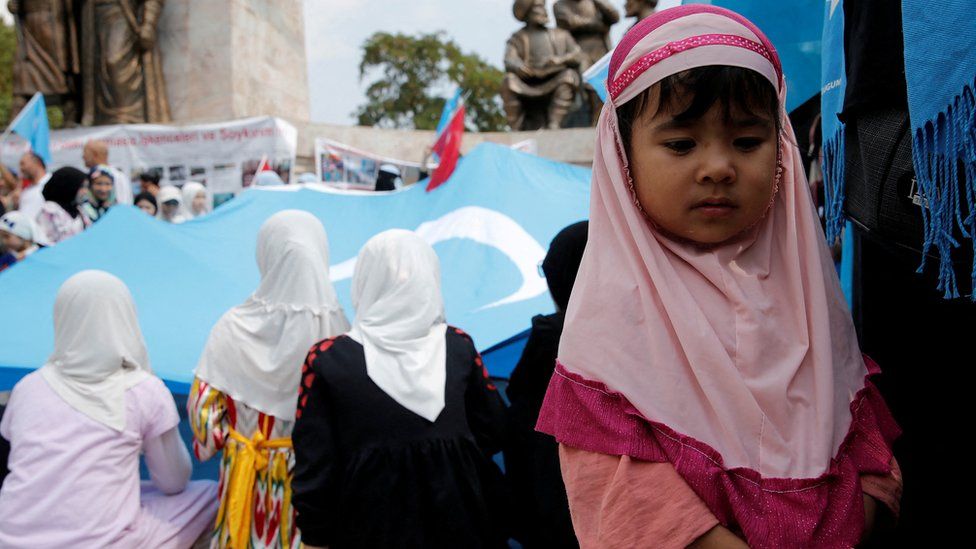
-
Watch rocket launch first Chinese civilian into space
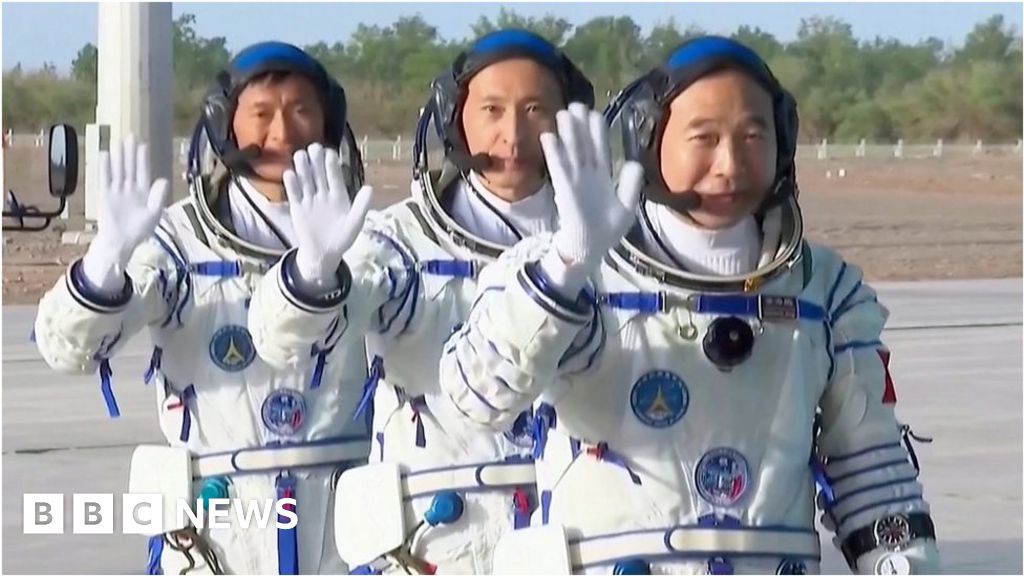
China has sent three astronauts to its Tiangong Space Station, putting a civilian into orbit for the first time. The Shenzhou-16 mission took off from the Jiuquan Satellite Launch Centre on Tuesday morning in the Gobi desert in the country’s northwest.

